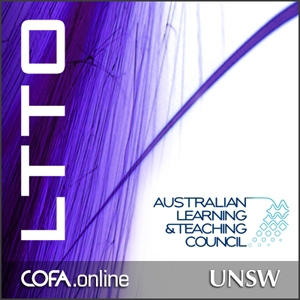
Photo credit: https://itunes.apple.com/us/itunes-u/learning-to-teach-online
By Paul Keyworth
LTTO (Learning to Teach Online) is “a free professional development resource designed to help teachers from any discipline, whether experienced in online teaching or not, to gain a working understanding of successful online teaching pedagogies that they can apply in their own unique teaching situations” (COFA.online Gateway, 2015). Currently, I am participating in a MOOC of the same name via Coursera, which is still accessible if you are interested. It is also available freely through iTunes.
Award Winning Resources
The project is the work of COFA Online, part of the College of Fine Arts at the University of New South Wales (UNSW), Sydney, Australia, and is supported by the Australian Learning and Teaching Council Ltd. Co-creators, Simon McIntyre and Karin Watson from UNSW, have won the following awards for LTTO:
2012 MERLOT Award for Exemplary Online Learning
Resources – MERLOT Classics (USA)
Faculty Development Editorial Board Award -
Learning to Teach Online
McIntyre, S., Watson, K.
2011 Ascilite Innovation and Excellence Award
Exemplary and research informed use of technologies
for teaching and learning in tertiary education -
Learning to Teach Online
McIntyre, S., Watson, K.
Learning to Teach Online Episodes
So far, I have discovered a wealth of resources and pedagogical information relating to implementing and evaluating OERs (Open Educational Resources) and institutionally-supported technologies. In particular, you may find these LTTO Episodes to be a valuable resource as you plan your online or blended courses. The instructional videos are compiled into three categories: “Context, Planning and Teaching,” “Case Studies,” and “Technical Glossary“ (COFA.online Gateway, 2015).
References
Learning to teach online. (2015). Retrieved from http://online.cofa.unsw.edu.au/






